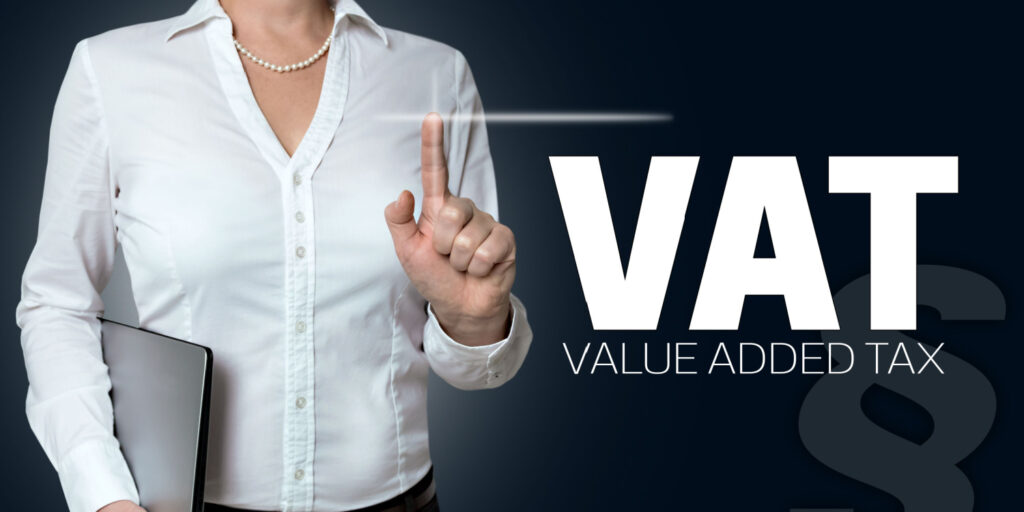If your business is registered for VAT, you will need to submit a VAT Return to HMRC – usually every 3 months. The return will show how much Value Added Tax you have charged to your customers and paid to other businesses. HMRC will then work out your VAT bill and tell you how much you owe or are due as a refund.
In this guide, we explain how to complete and submit a VAT Return online or using software. We also discuss who can file a paper VAT Return, the different rules that apply if you use the Annual Accounting Scheme, and how and when to pay your VAT bill.
Preparing and filing a VAT Return for your business
A VAT Return is a tax form that you complete for HMRC to report how much Value Added Tax (VAT) your business owes. It shows the amount of VAT you charged on the goods or services you sold, as well as the amount of VAT you paid on goods or services purchased for your business.
You usually need to submit a VAT Return every 3 months. This is known as your VAT accounting period. The filing deadline is 1 month and 7 days after the end of each quarterly accounting period.
However, if you use the VAT Annual Accounting Scheme, you only submit 1 VAT Return per year. The filing deadline is 2 months after the end of your 12-month accounting period.
- Are limited companies automatically registered for VAT?
- Pros and cons of voluntary VAT registration
- Our VAT Registration Service - only £39.99 plus VAT.
Based on the information you provide on the return, HMRC will determine whether you owe VAT or are due a VAT refund. The amount payable to HMRC (or refunded to you) is usually the difference between what you have paid to other businesses (input VAT) and what you have charged to your customers (output VAT).
If your output VAT is higher than your input VAT, you need to pay the difference to HMRC. If your input VAT is higher than your output VAT, HMRC will usually repay you the difference.
How do I submit a VAT Return?
Since the introduction of Making Tax Digital (MTD) for VAT, almost all VAT-registered businesses in the UK are required to file their returns online or via MTD-compatible software. The only exceptions are those who are exempt or have applied to HMRC for exemption.
Therefore, you will most likely have to file your VAT returns electronically in one of the following ways:
- Through commercial accounting software that is compatible with Making Tax Digital
- By appointing an accountant or agent to do it for you
- By signing in to your VAT online account and selecting ‘Complete return’ under the VAT heading. This option is only available if you use the VAT Annual Accounting Scheme
You can only submit a VAT Return on paper if you:
- object to using computers on religious grounds
- are unable to use computers due to your age, a disability, or a lack of internet access where you live
- can provide any other reason why it is not reasonable or practical for you to use a computer, software, or the internet
Additionally, you are automatically exempt if your business is subject to an insolvency procedure and does not have a Company Voluntary Arrangement or an Individual Voluntary Arrangement in place. If you have either arrangement, you may choose whether to file your VAT Return on paper or online.
HMRC may charge a penalty of up to £400 if you submit a VAT Return on paper when you are not eligible to do so.
How to complete a VAT Return
Whether you complete your VAT Return through software, online, or on paper, the form will have nine boxes. Not all of these boxes apply to every business, so you only need to complete the relevant ones.
If you file using software, the programme will automatically compile the figures required in each section from your digital records and then fill in the return boxes for you.
Detailed guidance on how to fill in each box on your VAT Return is available from GOV.UK, but we provide a summary below to give you an idea of the information you need to provide.
Box 1 – VAT due in the period on sales and other outputs
Include the VAT due on all of the goods sold and services supplied in the accounting period covered by the return. This is your output VAT for that period.
VAT may also be due on supplies that are outside the standard activities of your business. For example, goods that you took for your own private use, supplies to your staff, and the sale of business stock and assets.
Box 2 – VAT due in the period on acquisitions of goods made in NI from EU member states
This box applies only to businesses based in Northern Ireland (NI). It covers the VAT due on goods (and any related costs) purchased from VAT-registered suppliers in EU member states.
Related costs include any payments you make to cover a supplier’s costs in making the supply (e.g. packing, transport, insurance) that they are responsible for under their contract with you.
Box 3 – Total VAT due
In this section, you must show the total VAT by adding together the totals from boxes 1 and 2. This is your output VAT for the accounting period.
Box 4 – VAT reclaimed in the period on purchases and other inputs (incl. acquisitions from the EU)
The total amount of deductible VAT charged on the goods and services bought by your business. This is your input VAT for the accounting period. You should include any VAT you reclaimed in this period on imports you accounted for through postponed VAT accounting.
Box 5 – Net VAT to pay to HMRC or reclaim
This is the amount of VAT you owe to HMRC or need to reclaim from HMRC. Take the figures shown in boxes 3 and 4, deduct the smaller figure from the larger one, and enter the difference in box 5.
If the figure shown in box 3 is more than the figure shown in box 4, the difference is the amount you must pay. However, if the figure shown in box 3 is less than the figure shown in box 4, HMRC will credit your account and refund the balance.
Box 6 – Total value of sales and all other outputs excluding any VAT
This box shows the total value of business sales that you made and other specific outputs (excluding VAT). However, you must not include money that you personally paid into the business, insurance claims, loans, dividend income from shares, gifts of money, or Stock Exchange dealings (unless you are a financial institution).
Box 7 – The total value of purchases and all other inputs excluding any VAT
The total value of business purchases and expenses (excluding VAT). This includes the value of imports, acquisitions of goods brought into NI from EU member states, and ‘reverse charge’ transactions.
Box 8 – Total value of all supplies of goods and related costs (excl. any VAT) to EU member states
This box shows the total value of supplies of goods from NI to EU member states (excluding VAT) and any directly related costs (e.g. freight, insurance) where these were included as part of the invoice or contract price.
You must include the value of any goods dispatched from NI to an EU member state, even if there was no actual sale involved or the sale was invoiced to a person located outside the EU.
The figures that you enter in this box must also be included in the box 6 total.
Box 9 – Total value of all acquisitions goods and related costs (excl. any VAT) from EU member states to NI
The total value (excluding VAT) of all goods you bought from any VAT-registered suppliers in EU member states, as well as all directly related costs that were included as part of the invoice or contract price.
You must include the value of supplies such as:
- acquisitions you made within the VAT return period in which the tax occurs
- goods installed or assembled in NI where those goods were dispatched from an EU member state
You must not include the value of:
- the goods themselves when you supply processing work
- services related to acquisitions that have been invoiced separately
- separate supplies of services
The figures you enter in this box must also be included in the box 7 total.
When you have filled in the relevant boxes
Once you’ve entered all of the required information in the relevant boxes on the VAT Return, review the details carefully to ensure the figures and calculations are correct. You can go back and correct any errors if need be. When you are happy with everything, you can submit your return to HMRC.
If you notice a mistake after you submit a VAT Return
It is not possible to amend a VAT Return after submitting it to HMRC. However, you can correct mistakes by making an adjustment or correction in your next VAT Return, provided that the net value of the mistake is either:
- £10,000 or less
- between £10,000 and £50,000 but less than 1% of the total value of your sales (the net outputs figure shown in box 6 of the incorrect return)
You must tell HMRC separately about any net errors in your VAT Return if they are:
- more than £50,000
- greater than £10,000 if they exceed 1% of the total value of sales
- deliberate errors
To calculate the net value of any VAT errors on previous returns, you need to work out:
- the total amount of VAT due to HMRC (if any)
- the total amount of VAT due to you as a refund (if any)
The net error is the additional VAT due to HMRC minus any VAT refunds that you are due.
HMRC provides detailed guidance on correcting VAT errors, amending your VAT records, and claiming a refund if you have overpaid VAT. If you need help making corrections or have any questions, you can contact the VAT General Enquiries Team for advice.
Paying your VAT bill
After you submit a VAT Return, you will need to pay any VAT that you owe to HMRC. The payment deadline will be shown on your VAT Return. It should be the same as your filing deadline – 1 month and 7 days after the end of your accounting period.
However, you will have different deadlines if you use the Annual Accounting Scheme or make payments on account (advance payment toward your VAT bill). HMRC will ask you to make payments on account if you send quarterly returns and owe more than £2.3 million in any period of 12 months or less.
You can sign in to your VAT online account (also known as your business tax account) to:
- view your deadlines for sending your VAT Returns
- find out when any payments of VAT must clear HMRC’s account
- check and appeal penalties
You must pay your VAT bills online by:
- approving the payment through your bank account using your online banking details
- debit or business credit card
- Direct Debit
When making payments, you will need to provide your 9-digit VAT registration number. HMRC uses this to identify your business and credit your payments to your VAT account.
You can use HMRC’s VAT payment deadline calculator to work out how much time you should allow for your payments to clear HMRC’s account. You may face penalties if you miss the deadline.
If you are due a VAT refund, HMRC will usually send the repayment to you within 30 days of receiving your VAT Return.
If you cannot pay your VAT bill on time
You must contact HMRC as soon as possible if you miss a VAT deadline or know that you won’t be able to pay your VAT bill on time.
If you are unable to pay your bill in full, HMRC may allow you to set up a payment plan to pay what you owe in instalments. This is known as a ‘Time to Pay’ arrangement.
If you use the VAT Annual Accounting Scheme
Since November 2022, businesses can only send VAT returns online if they use HMRC’s VAT Annual Accounting Scheme. This scheme is only available to businesses with an estimated VAT turnover of £1.35 million or less in the next 12 months. If you join this scheme, you will need to make monthly or quarterly advance payments towards your VAT bill and submit only 1 VAT Return per year.
HMRC will estimate your advance payments (if you are new to VAT) or base them on your previous VAT returns. If you pay monthly, each payment will be 10% of your estimated VAT bill. If you pay quarterly, each payment will be 25% of your estimated bill.
You will then make a balancing payment when you file your VAT Return. This final payment is the difference between what you’ve paid in advance and the actual amount you owe, as confirmed on your VAT Return. If you pay too much throughout your accounting period, you can apply to HMRC for a refund.
If you are considering joining the Annual Accounting Scheme, we would recommend consulting an accountant first. It won’t be suitable for your business if you need to regularly reclaim VAT, since you will only be able to get one refund per year (after you file your VAT Return).
What happens if my VAT Return or payments are late?
If HMRC receives your VAT Return after the filing deadline or you are late paying your bill, you may have to pay VAT penalties or interest.
For VAT accounting periods beginning on or after 1 January 2023, you:
- will be charged late payment interest on the outstanding amount that you owe
- may also be subject to late payment penalties if you don’t pay your VAT bill by the payment deadline
- may be subject to late submission penalties if you don’t submit a VAT Return by the filing deadline
If your VAT record-keeping is meticulous and you use an accountant, you will greatly reduce the risk of late VAT returns and payments.
Thanks for reading
The first time you submit a VAT Return can be daunting. It is not always an easy task, especially if your tax affairs are complex. However, if your business income and expenditures are relatively straightforward, completing and filing your VAT returns each quarter may be a simple affair.
If you are at all unsure or do not feel confident dealing with VAT by yourself, speak to an accountant for professional help and guidance. Doing so will minimise the risk of errors or late filings. They will also be able to identify tax-saving opportunities for you and your business.
Please leave a comment below if you have any questions about this post. Explore the 1st Formations Blog for more tax guidance for limited companies and small business advice.
Please note that the information provided in this article is for general informational purposes only and does not constitute legal, tax, or professional advice. While our aim is that the content is accurate and up to date, it should not be relied upon as a substitute for tailored advice from qualified professionals. We strongly recommend that you seek independent legal and tax advice specific to your circumstances before acting on any information contained in this article. We accept no responsibility or liability for any loss or damage that may result from your reliance on the information provided in this article. Use of the information contained in this article is entirely at your own risk.












Join The Discussion